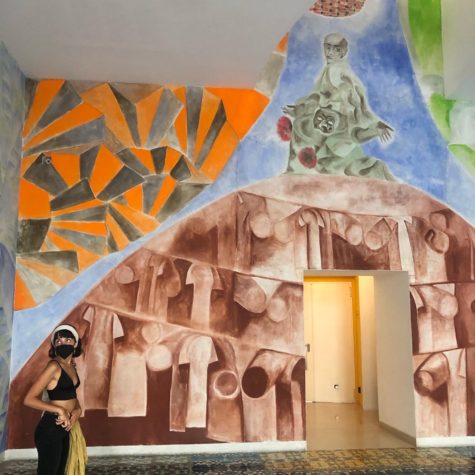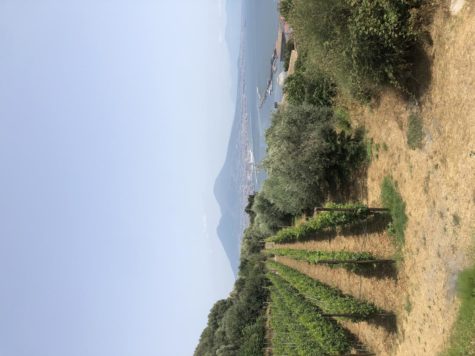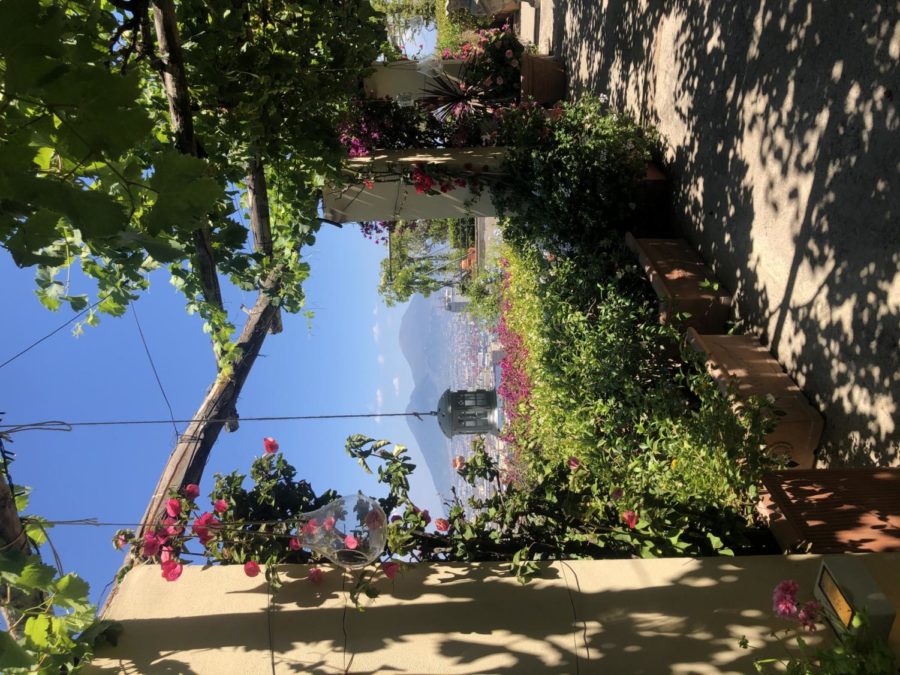Gomorrah: An Unfair Depiction of Naples
The riveting TV series Gomorrah is a monumental step in eradicating organized crime through investigative journalism. But is it an accurate representation of Neapolitan life?
Here is a view of Mount Vesuvius from the lovely gardens at San Francesco al Monte, a former convent turned hotel.
Gangsters, shootouts, mass arrests at weddings: all of these and more are central to Neapolitan crime films. While these dangerous yet exciting events do happen in real life, the dramatized version that appears on screens might be more harmful to Naples than organized crime itself.
Naples is home to some of the most ruthless and feared Mafiosi, or gangsters, in all of Italy. (Technically, the term Mafia does not apply to Naples’ organized crime; the group that has a famous stranglehold over the city is called the Camorra. The Mafia, or cosa nostra — literally translating to “our thing” — is a Sicilian organized crime group). But Naples is also home to some of the most daring and fearless investigative journalists, such as Roberto Saviano, who risk their lives to expose the nefarious deeds of these gangsters in brilliant articles and books.
With the publication of Roberto Saviano’s book Gomorrah in 2007, Saviano found himself living under police witness protection in the United States. Gomorrah, a “crude and gritty depiction of life in the Camorra,” sold 4 million copies in 2008 alone. It was then turned into a hit TV show. As much as Saviano is respected and loved for his dangerous work, many Neapolitans believe the show goes too far.
Critics have celebrated Gomorrah for its authenticity. Filmed in Neapolitan dialect rather than Italian, employing local actors, and shot in the city’s most infamous neighborhoods, many non-natives see this show as an accurate reflection of the gangster scene. But residents think otherwise.

The mayor of Naples, Luigi De Magistris, a former anti-mafia prosecutor, is concerned about the impact that the show has on the world’s perception of Naples and on Neapolitan teens. The humanization of Camorra gangsters has dangerous consequences. As evidence, De Magistris cites the fact that every night an episode of Gomorrah airs, there is a spike in violence in the city. Youth often try to imitate Camorristi’s hairstyles and outfits. There is an increased perception that bored teenagers, inspired by the gangsters they see on TV, roam the city with knives, looking for a fight. The show also portrays a deliberate absence of the police force, which is insulting to increased anti-mafia efforts throughout Southern Italy.
Tourists visiting Naples could never imagine how sophisticated the Camorra is and how pervasive it is in the economy. The city has a vibrant historical center with ancient and beautiful churches, piazze, and museums. Neapolitans are proud of their city’s cultural heritage and beauty. Stunning views of the island-studded bay and the dramatic view of the volcano can be admired even from the city’s run-down neighborhoods. Passersby engage each other in fun, spontaneous conversations. Local musicians and improv artists perform at cafes, restaurants, and bars. Naples has an important subculture of grassroots action led by local teens; youth organizers meet in abandoned churches to plan protests, demonstrations, and events, in order to help their communities.
Yet large sections of the economy and government are totally owned by the Camorra. For example, 90% of waste disposal and transportation businesses have ties to organized crime, and Italy has had many infrastructure failures due to the infiltration of organized crime in construction and in government. The Mafia is able to accomplish this through bribery, coercion, and intimidation of civil servants.
Flora Molettieri, who is in her last year of Liceo Classico — an Italian high school where students receive a classical education in philosophy, Ancient Greek, Latin, and history — told me over the summer that one will never see the Camorra in the city’s historical center, and that Gomorrah glosses over the sophisticated cultural life in Naples, especially in terms of youth activism.

When I brought this up with another Italian friend, Luca, he said, “It’s not [the people’s] fault. The government failed to provide them with basic necessities and the Camorra sprung up as a result.”
One neighborhood that is particularly impacted by the Camorra is Scampia, which is on the Northern periphery of the city. Scampia is infamous for the crime-ridden housing projects built there called Le Vele (the Sails). There is currently a controversial demolition project under way to demolish these buildings, which is opposed by Saviano himself. While the residents are firmly attached to their history with Le Vele, they dislike their connection with the show. Graffitied sayings like “We are not Gomorrah” can be found painted on the walls.
De Magistris has accused Saviano of “building an empire off the backs of Naples and Neapolitans.”

The creators of Gomorrah argue that they did not invent the Camorra, and that this story is a universal one. They believe that they are doing their duty as journalists in reporting the facts. Yet Neapolitan natives think it’s a misrepresentation of their reality. “Gomorrah doesn’t belong to us,” said De Magistris.
Contrary to how it’s portrayed in these hit series, Naples is a place of beauty, intrigue, and mystique. In seeking to expose the evils of organized crime to the world, investigative journalists, directors, and producers have endangered Neapolitan youth and unjustly altered the world’s perception of this ancient and sophisticated city.
To watch Gomorrah on Amazon Prime (rental fee required), click HERE.
Critics have celebrated Gomorrah for its authenticity. Filmed in Neapolitan dialect rather than Italian, employing local actors, and shot in the city’s most infamous neighborhoods, many non-natives see this show as an accurate reflection of the gangster scene. But residents think otherwise.
Alexandra Smithie is an Arts and Entertainment Editor for 'The Science Survey.' She reviews and edits articles on culture and creativity for this specific...

